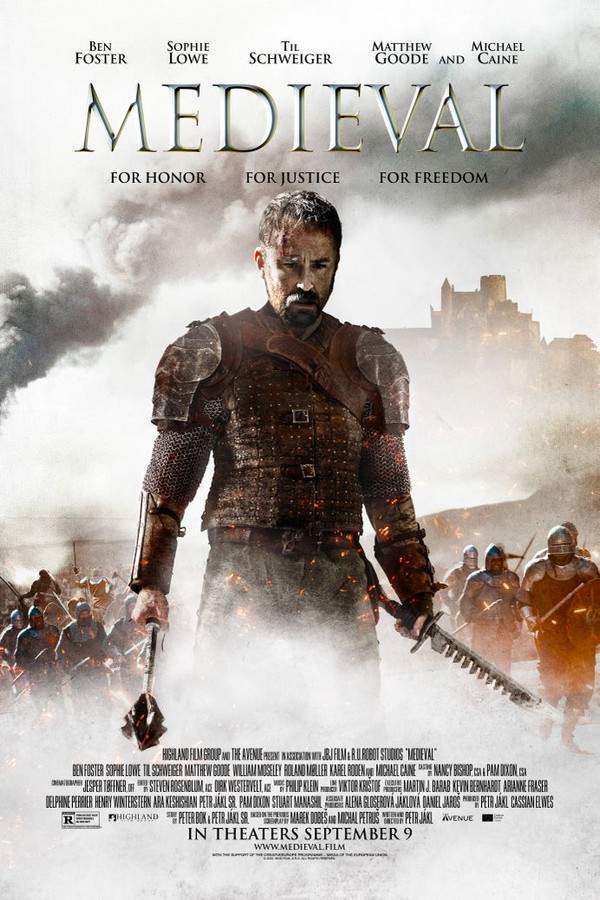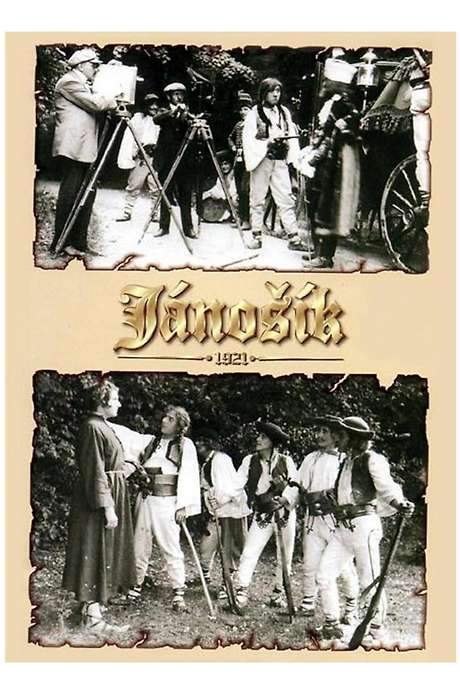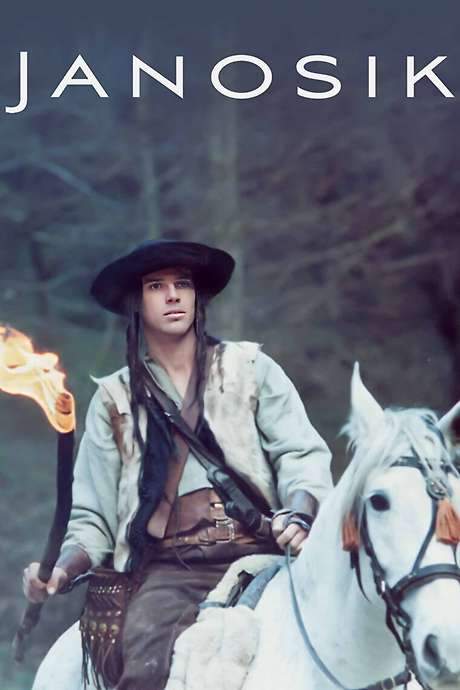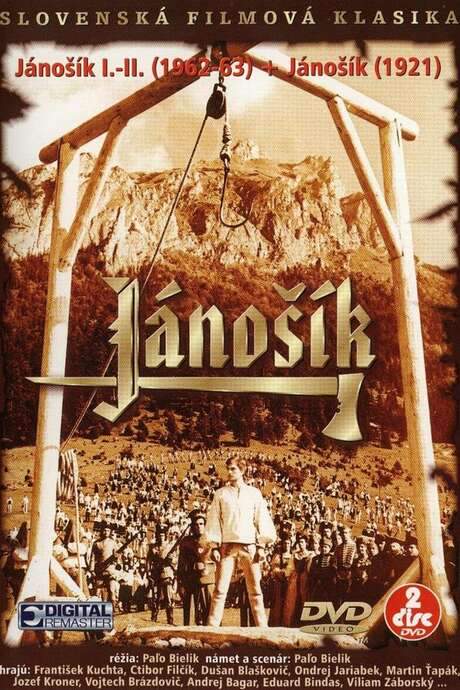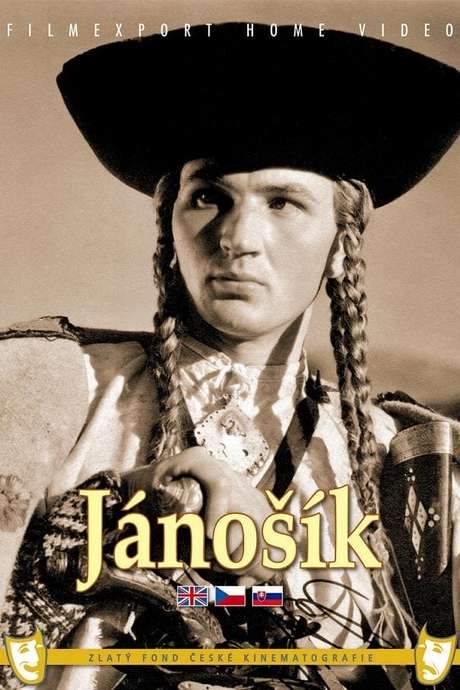Warning: spoilers below!
Haven’t seen Jan Žižka yet? This summary contains major spoilers. Bookmark the page, watch the movie, and come back for the full breakdown. If you're ready, scroll on and relive the story!
Jan Žižka (1956) – Full Plot Summary & Ending Explained
Read the complete plot breakdown of Jan Žižka (1956), including all key story events, major twists, and the ending explained in detail. Discover what really happened—and what it all means.
Johanka, Marie Tomášová travels through Bohemia in the wake of Jan Hus’s execution, guiding a wary band of fugitives toward the mountains where forbidden sermons still echo. Their journey is marked by constant danger as they press on, and a brutal ambush by the lord’s Rožmberk forces tests their resolve. Against steep odds and with sheer luck on their side, the group narrowly escapes the pursuing henchmen, keeping faith with the spiritual message that sustains them.
Across the capital, King Wenceslas IV faces mounting pressure from emissaries of his brotherSigismund of Luxembourg and the Pope, who threaten a crusade if the Hussite movement is not crushed and church property restored to the Catholics. This pressure pushes the king toward a hard line: he bans large gatherings and orders a sweeping confiscation of weapons from Prague’s citizens, a move that stirs the city’s nerves and feeds the growing dissent. The scene is set for a radical shift in loyalty and power, as fear collides with defiance.
To enforce his edict, Jan Žižka, the adjutant, takes up the king’s mandate, and the tense climate soon erupts into street-level mobilization. Jan Žižka, Zdeněk Štěpánek emerges as a charismatic and uncompromising leader among the Hussite faithful, even as the priest Jan Želivský, František Horák, calls the people to action. In Prague, they arm the poor and the downtrodden, turning ordinary citizens into a force capable of challenging the crown’s authority.
The narrative narrows to a dramatic confrontation: students Ješek and Prokůpek, along with three Prague journeymen, are captured in a clash with royal troops. The captured are held hostage at the New Town Hall, where the tension mounts as Želivský’s followers surge into the square. Ješek’s fate serves as a cruel reminder of the price of rebellion, while the crowd’s fury swells around the barricades. As the siege erupts, four captives survive the onslaught, but Ješek dies before rescue can reach him. In the wake of this tragedy, the Hussite crowd storms the hall, rending the city’s political fabric with their audacious audacity.
With the gate breached and fear turned to fervor, the people spontaneously elect Jan Žižka as their leader and governor, a move that cements the Hussites’ political and military authority in the moment. The king’s howl of rage is heard far afield, and Wenceslas’s response—intense, tragic, and climactic—culminates in a paralytic stroke that ends his reign and births a new political order: the Hussites now claim a voice that cannot be silenced. Queen Žofie, Vlasta Matulová, flees Prague as the city quakes with upheaval, while Wenceslas’ body is secretly laid to rest at the Zbraslav Monastery, away from the palace’s jagged intrigues.
News of the king’s death travels to Sigismund, the Holy Roman Emperor, who is campaigning elsewhere and eager to restore order to Bohemia. Sigismund tasks the Czech nobility with suppressing the rebellion and designates Cenek of Vartenberk as his representative. Loyalties shift as rural Hussites and urban rebels align against a nobility that seeks to preserve its own prerogatives. The city becomes a chessboard: Old Town’s merchants secretly strike a deal with Vartenberk, seizing Prague Castle and Vyšehrad and sealing off the city from its former rulers.
As Prague’s circles tighten, a second wave of Hussite leadership emerges. Jan Žižka and Václav Koranda, Miroslav Doležal the priest, mobilize the Hussite factions from Prague toward Tábor, a fortress-town perched near Sezimovo Ústí. On the road to Tábor, their retinue faces a brutal ambush near Sudoměř by lordly cavalry and other hostile forces, the Johannites of Strakonice cutting into their path. The ensuing clash becomes the film’s crucible: the Hussites, led by Žižka, withstand and eventually disperse the overwhelming Catholic lords’ forces, a testament to their resolve and tactical courage.
The siege’s toll is mortal as well as moral: the brave maid Johanka dies fighting among the Hussites, a symbol of sacrifice that underscores the movement’s human cost. Yet the remaining Hussites press on, and their prayers, courage, and stubborn stubbornness carry them toward the distant hilltop town of Tábor. Along this march, other figures emerge: Cenek from Vartenberk’s supporters tighten the noose around Prague, while Tomas—the Burgrave—sends his own signals of loyalty to the crown’s fallen authority, and the group’s cohesion helps them endure.
On the road to Tábor, the caravan of reformers presses forward with a sense of inevitability, even as treachery and shifting alliances threaten to unravel their purpose. The climactic battle near Sudoměř becomes not only a military showdown but a moral victory for a movement that refuses to bow to the old order. The Hussites’ victory solidifies their path, and the survivors finally reach Tábor, where the dream of reform, justice, and spiritual renewal can take root in a new homeland.
In the broader landscape, the film’s events unfold with a careful attention to the individuals who steer history: the quiet courage of the helpers, the relentless leadership of Jan Žižka, the spiritual fire kindled by Václav Koranda, and the moral ambiguities faced by a city divided by religion and power. The narrative remains grounded in its human core—the people who endure, fight, and ultimately shape the future of Bohemia—while never losing sight of the personal costs that such upheaval exacts.
Last Updated: October 05, 2025 at 11:23
Unlock the Full Story of Jan Žižka
Don't stop at just watching — explore Jan Žižka in full detail. From the complete plot summary and scene-by-scene timeline to character breakdowns, thematic analysis, and a deep dive into the ending — every page helps you truly understand what Jan Žižka is all about. Plus, discover what's next after the movie.
Jan Žižka Timeline
Track the full timeline of Jan Žižka with every major event arranged chronologically. Perfect for decoding non-linear storytelling, flashbacks, or parallel narratives with a clear scene-by-scene breakdown.

Similar Movies to Jan Žižka
Discover movies like Jan Žižka that share similar genres, themes, and storytelling elements. Whether you’re drawn to the atmosphere, character arcs, or plot structure, these curated recommendations will help you explore more films you’ll love.
Explore More About Movie Jan Žižka
Jan Žižka (1956) Scene-by-Scene Movie Timeline
Jan Žižka (1956) Movie Characters, Themes & Settings
Jan Žižka (1956) Spoiler-Free Summary & Key Flow
Movies Like Jan Žižka – Similar Titles You’ll Enjoy
Medieval (2022) Spoiler-Packed Plot Recap
Zahradnictví: Dezertér (2017) Detailed Story Recap
Člověk proti zkáze (1990) Film Overview & Timeline
Pěsti ve tmě (1987) Plot Summary & Ending Explained
Jan Hus (1955) Plot Summary & Ending Explained
The Key (1971) Story Summary & Characters
The Battle of Sutjeska (1973) Movie Recap & Themes
Jánošík (1921) Detailed Story Recap
Honor and Glory (1969) Detailed Story Recap
Boško Buha (1978) Movie Recap & Themes
Janosik (2009) Film Overview & Timeline
Jánošík (1963) Complete Plot Breakdown
Jánošík (1936) Story Summary & Characters
Jan Cimbura (1941) Full Movie Breakdown
Against All (1957) Full Movie Breakdown




